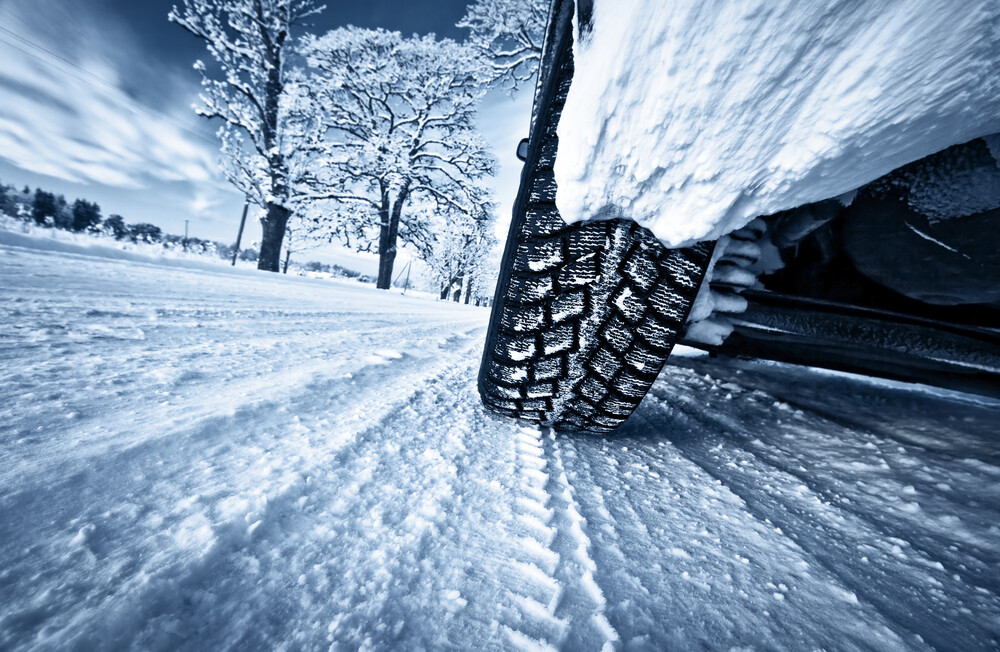
Driving In Winter Conditions
As the weather begins to get colder, a lot of us are able to stay warm and dry inside the comfort of our office, only having to face the bitter weather on our ways to and from work. However, if you have a job that requires you to be on the road for a great proportion of your day, then it is important for you to take as much care as possible when driving in severe winter weather conditions.
Tyres
Before you head out for your first job of the day, check your tyres. Poor tyres will not grip on snowy or icy road surfaces. Ensure your tyres are inflated properly and that they meet the minimum standards for tread depth. In the UK this is 1.6 millimetres, however, in icy conditions 3 millimetres minimum is advisable.
Windscreen
Clear ice and snow from your windscreen before you leave. The best method is to use a can of de-icer and a scraper. Do not use hot water as this can crack the glass, plus the water will quickly turn to ice again. Also, ensure your windscreen wash reservoir is topped up with the correct balance of water and wash to prevent it from freezing.
Locks
In freezing weather car locks can freeze up. To prevent this from happening, spray each lock with WD-40. However, if they do freeze over, heat up your key with a lighter to melt the ice.
Speed
Ensure that you keep your speed at a steady pace – you don’t want to be too fast as you may lose control of your vehicle, but also you don’t want to be too slow as you risk losing momentum when you need it. Brake, steer and accelerate as smoothly as possible. Start in 2nd gear and avoid high revs and for better control on icy roads, stay in a higher gear. When you are driving downhill, get your speed low before you start going down the slope. This is safer than trying to slow down once you have started downhill.
Stopping Distance
Making sure that you maintain a safe stopping distance between you and the car in front. In normal weather the stopping distances are:
- 20mph = 12 Meters / 40 Feet
- 30mph = 23 Meters / 75 Feet
- 40mph = 36 Meters / 118 Feet
- 50mph = 53 Meters / 175 Feet
- 60mph = 73 Meters / 240 Feet
- 70mph = 96 Meters / 315 Feet
However, for ice and snow conditions the distance should be at least 10 times more than the above ‘normal’ stopping distances.
Skidding
When you start to approach a bend, make sure you slow down prior to turning the steering wheel, and if you do begin to skid, don’t panic, just follow these steps:
- Remove your foot from the accelerator – this throws the weight balance of the car forwards and helps the tyres find grip. Also, as your car begins to slow it will give you time to gain control.
- Do not use the brake – though our natural reaction is to slam on the brakes, this will lock up the tires in the back of the car and cause them to have even less chance of regaining traction.
- Turn into the skid – as the tyres find grip carefully steer the car into the direction of the skid. For example, if the rear of the car skids to the right, steer smoothly to the right.
Roads
When planning your journey for the day try to avoid minor roads, like country lanes, where possible. These smaller roads are less likely to have been gritted and cleared. On motorways, stay in the clearest lane, away from sludge and ice if possible.
Lights
If the weather conditions are really poor (falling snow, heavy rain etc) then use your dipped headlights to not only help you see but also to make you more noticeable to other drivers and pedestrians. However, if visibility drops below 100 metres then you must use your fog lights, but ensure you turn them off as soon as visibility improves as they can dazzle on-coming cars.
Contact MSL
Call us today on 0333 1234450 or fill out the form on our contact page and we will get back to you.
Contact Us